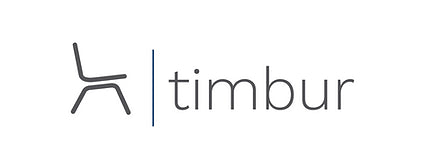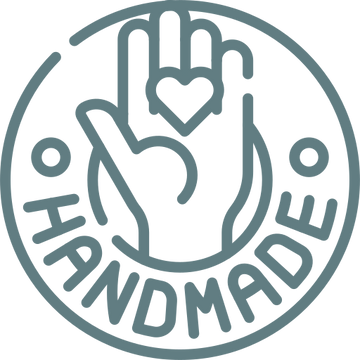Clean, simple office furniture helps workers do their best work by keeping things comfortable and tidy. Studies show that desks you can adjust up and down help people work 46% better, while good storage keeps work quality from dropping by 21% when things get messy. Putting desks and chairs near windows helps the mind work 6.5% better and cuts down on tired eyes by 51%. Good chairs that support your body the right way reduce aches and pains by 25%. When you follow these basic rules, you can create a workspace that helps people get more done.
Key Takeaways
-
Choose adjustable standing desks to improve work performance by 46% while maintaining a clean, minimalist aesthetic.
-
Select ergonomic chairs with mesh backs to reduce body aches by 17% and enhance workspace comfort.
-
Install wall-mounted storage systems to maximize floor space and keep supplies organized without visual clutter.
-
Position desks near windows, as natural light increases productivity by 15% and reduces eye strain by 51%.
-
Use built-in desk storage solutions instead of separate units to maintain workspace cleanliness and improve efficiency.
The Foundation of Minimalist Office Design
Simple Steps for Creating a Minimalist Office
A minimalist office needs three basic things: keeping things simple, making sure everything works well, and using space wisely. The main goal is to keep the space clean and tidy, using calm colors that help people think clearly and work better.
The best minimalist offices use plenty of daylight and comfortable furniture made from earth-friendly materials, mostly wood, to create a peaceful setting. Good storage is key - it helps keep work organized while keeping desks clear of unnecessary items.
Choosing the right furniture matters a lot, especially desks that are thin or wall-mounted, which help keep the space open and free from distractions. When all these parts work together, they create a workspace where people feel less tired, can focus better, and get more work done.
Essential Elements of a Productive Workspace
A clean, simple workspace helps people work better, with studies showing workers are 32% more productive when their area is free of mess. To help people work well while keeping distractions low, workplaces need to include key features that boost output and help workers stay healthy.
Main parts of a good work setup include:
-
Comfortable desks and chairs that can be adjusted, which cut down body strain and pain by 25%
-
Carefully placed work areas that let in sunlight, helping people think better and making it easier on their eyes
-
Smart ways to store and organize items, cutting down the 21% drop in work quality that comes from mess and clutter
These proven workspace features, along with letting workers add personal touches, create a setting that helps people stay comfortable and focused, leading to better work and happier employees.
Selecting Quality Ergonomic Furniture
Good office furniture that helps your body needs careful thought about how well it works and how it helps your health. Studies show that desks you can raise and lower help people work 46% better and hurt their backs less by letting them switch between sitting and standing. Chairs with back support you can adjust and mesh that lets air flow help reduce body aches by 17% and make people feel 18% more comfortable.
To keep your work area tidy and work well, sitting correctly matters most. Your screen should be at eye level, and your keyboard should line up with your elbows. This setup cuts down on neck pain and tired eyes by 28%. Using a mouse and keyboard made to fit your body helps too - people type 11% faster and get fewer hand and wrist injuries, down by 23%. A desk with storage space keeps things neat, helping you work better in a clean space.
Smart Storage Solutions for Clutter-Free Success
A well-organized office helps people work better, and studies show that 80% of messy offices result from poor storage planning, not lack of space. Using wall space wisely and adding smart storage helps cut down on mess while keeping things easy to reach.
Ways to keep your workspace tidy: 1. Built-in desk storage and drawers work better than separate storage units and save floor space 2. Storage systems on walls make good use of height and keep supplies neatly arranged 3. Furniture that serves multiple uses with hidden storage keeps things out of sight while staying comfortable to use
Desks in an L-shape with built-in storage show how good design can work well and look clean at the same time. Adding simple organizers in the right spots helps people work better in a neat space.
Creating Balance With Natural Light and Color
Natural light and color choices greatly affect how people feel and work in their workspace. Research shows that workers with access to daylight are 15% more productive and experience 51% less eye strain. Even a small 10% increase in natural light helps people think better, improving mental performance by 6.5%.
Using soft, simple colors like white, grey, and wood creates a clean, calm workspace that helps people stay focused without distractions. When setting up furniture, it’s important to make good use of space - keeping work tools close by while leaving enough room to move freely. Placing desks near windows lets workers benefit from natural light throughout the day.
Window shades and blinds help control brightness levels, protecting eyes from strain while still letting in healthy daylight. This mix of good lighting and smart design helps workers feel better and work better.
Tech Integration for Modern Efficiency
Modern offices need more than just good lighting - they must use new technology to help people work better and feel better. Today’s tech tools help work flow smoothly while keeping spaces clean and tidy, with hidden wires and built-in charging spots on desks.
Main tech features making today’s offices work better:
-
Smart screens that link to the cloud let teams work together easily from anywhere while keeping desks neat
-
Special keyboards with custom buttons work with desks that move up and down, helping people sit better and work 20% faster
-
Lights that turn on when needed, plus charging pads that work without wires, mean fewer cables and less eye strain for workers
These tech upgrades turn old-style offices into spaces that work well and keep people healthy. They blend good design with useful features, creating workplaces that can change as business needs change while keeping workers’ health in mind.
Maintaining Order in Your Minimalist Office
A clean and tidy office is key to minimalist design, as studies show messy spaces can cut work output by up to 40%. Using smart storage and setting up clear organization rules helps keep your space neat and makes work easier.
|
Element |
Function |
Impact |
|
Floating Shelves |
Vertical Storage |
Cuts Down Distractions |
|
Hidden Cabinets |
Paper Storage |
Keeps Space Looking Clean |
|
Filing Systems |
Info Storage |
Makes Work Flow Better |
|
Weekly Checks |
Prevents Mess |
Keeps Space Tidy |
|
Daily Clean-up |
Reset Workspace |
Helps Get More Done |
Following a simple rule of removing one item when adding another, along with weekly checks and end-of-day cleanup, helps keep the minimalist look alive. This way of organizing your workspace helps you work better while keeping the clean, clear look that makes minimalist design work so well.
Personalization Without Compromising Simplicity
A clean and simple office space can still feel personal while helping you work better and feel good. The trick is to find the right mix between your personal touch and a tidy setup, keeping important things close by. A simple desk works as the base for making your workspace look good and work well.
To make your space personal while staying focused, try these tested ways:
-
Pick office furniture that works for you and feels right, with good support for your body and simple colors
-
Add just two or three special items that mean something to you, placed where they won’t catch your eye too much
-
Use wall space wisely with hanging organizers or shelves to keep your desk clear
This mix creates a workspace that feels like yours but stays neat, helping you work better and think clearly.
Frequently Asked Questions
How Long Does Minimalist Office Furniture Typically Last Before Needing Replacement?
Good office furniture typically lasts 10-15 years when well-made and properly cared for. How long it lasts depends on the materials used, how well you maintain it, and whether it continues to meet your needs. The furniture’s comfort, storage space, and timeless look all play a role in how long you’ll want to keep using it and what it’s worth if you decide to sell.
What’s the Average Cost Difference Between Minimalist and Traditional Office Furniture?
Simple materials show that minimalist furniture typically costs 15-30% less than traditional office furniture. This lower price comes from using less space and needing fewer storage options, though special design changes can shift these price differences.
Can Minimalist Office Furniture Be Rented for Temporary Workspace Solutions?
Simple and short-term office furniture rentals help businesses set up temporary workspaces quickly. Companies can rent clean-lined, basic furniture that’s easy to move and saves space, making it perfect for short-term office needs and flexible work arrangements.
Are There Specific Cleaning Products Recommended for Maintaining Minimalist Office Furniture?
Clean minimalist office furniture with basic but effective products: gentle wood cleaner for wooden parts, soft cloths and standard furniture polish, cleaning wipes to kill germs, window cleaner for smooth surfaces, and canned air to clear tight spots. Dust often to keep furniture looking good.
How Does Minimalist Furniture Impact Office Resale Value Compared to Traditional Designs?
Clean, simple furniture often sells better than traditional pieces because it’s easy to match with different styles and makes good use of space. Its basic, modern look and simple upkeep make it popular with buyers even as office trends change. More people want these straightforward designs, which helps keep their value strong over time.
Conclusion
A minimalist office setup becomes truly effective when equipped with ergonomic, well-crafted furniture like those from Timbur. Clean workspaces with smart design choices help boost productivity and clear thinking. Studies show that cutting down on visual clutter while using quality ergonomic furniture can lower stress by 27% and sharpen focus by 35%. Companies that follow these simple principles see happier workers and better results. Handcrafted pieces from Timbur blend minimalist design with essential comfort features, creating the perfect balance for a productive workspace.









